Submitted by WA Contents
Vincent Callebaut Architectures designs rainbow tree residential tower in the Philippines
Philippines Architecture News - Mar 25, 2020 - 13:31 33410 views
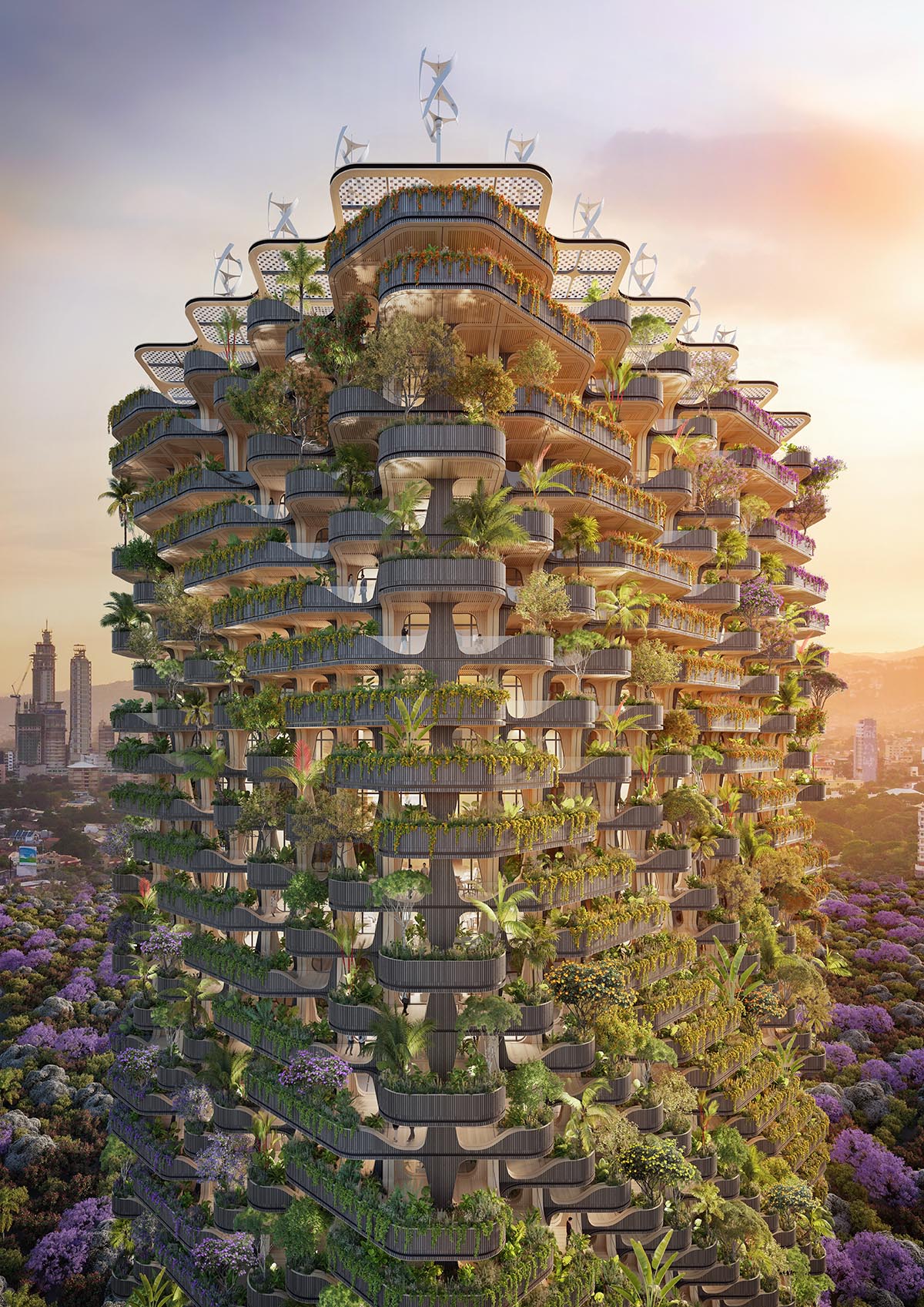
Paris-based architecture practice Vincent Callebaut Architectures has unveiled design for a rainbow tree residential tower on the island of Cebu in the Philippines.
Dubbed as The Rainbow Tree, the 115-meter high tower will reach at 32 story and contains 300 apartment units, including mixed-use residential, condominium with retail and serviced apartments.
The project takes its name from "Eucalyptus Deglupta", also known as Rainbow Eucalyptus, an iconic and colorful tree from the Philippines.
The aim of the project is to construct a residential building with double environmental certification (LEED + BERDE) which offers the perfect balance between mixed cultural heritage and natural heritage of unparalleled splendor.

"On October 31, 2019, the United Nations Educational, Scientific, and Cultural Organization (UNESCO) designated 66 new "Creative Cities. Among them is Cebu, awarded for its innovation in design, particularly in the field of fashion, architecture, and the production of eco-responsible furniture," said Vincent Callebaut Architectures.
"The architecture of the Philippines is both a dynamic combination of multiple influences and a reflection of the country's historical and cultural heritage. This heritage is based on a mixture of Austronesian, Chinese, Malaysian, American (Art Deco), and Spanish (Baroque) influences."

"At a time when we need to find radical solutions to reduce the global carbon footprint, we have designed a 32-story, 115-meter high tower built of solid wood, as it is the only natural, abundant, and renewable material," added the firm.
The Rainbow Tree organic tower integrates the principles of passive bioclimatism and advanced renewable energies.

"The Rainbow Tree" tower is adorned with the most beautiful plant essences from the neighboring tropical forests. This luxuriant dress of more than 30,000 plants, shrubs, and tropical trees draws a flourishing spiral in the colors of the rainbow and brings a breath of freshness to the heart of Cebu Business Park which is mainly built of concrete and steel.

The Rainbow Tree is a staggered geometric stack of 1,200 modules, each with sides measuring 4 meters sides and a height varying between 3.2 to 4.8 meters.
All these mass timber modules are prefabricated and standardized in a factory with a very high degree of precision. They are directly inspired by the "Bahay Kubo" (literally, cubic houses, also known as "Nipa Huts").
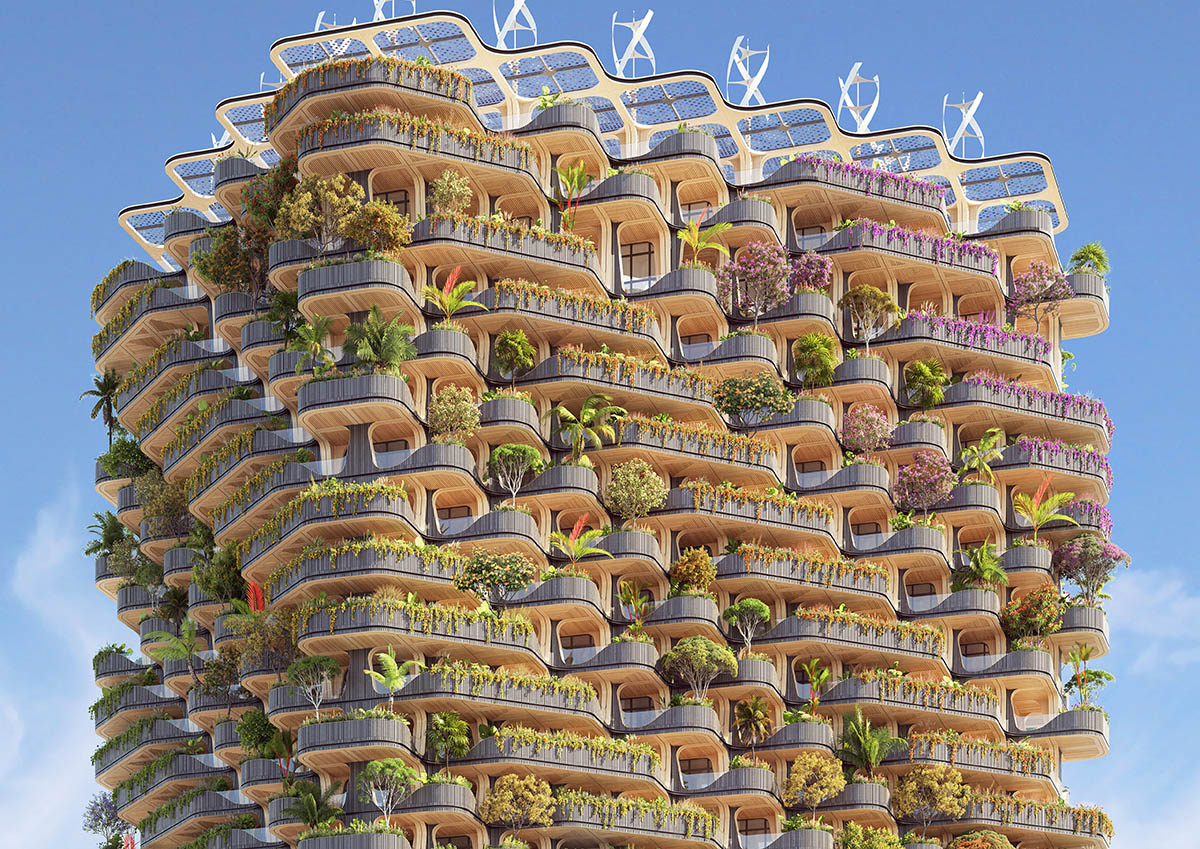
These indigenous nomadic houses were made of natural materials from the forest such as wood, bamboo, and palm leaves. Before the arrival of the Spanish colonizers with their stone-base constructions, this traditional Filipino rural house originally rested on stilts and was anchored to the trunk of trees near the rice fields, coconut palms, and orchards.
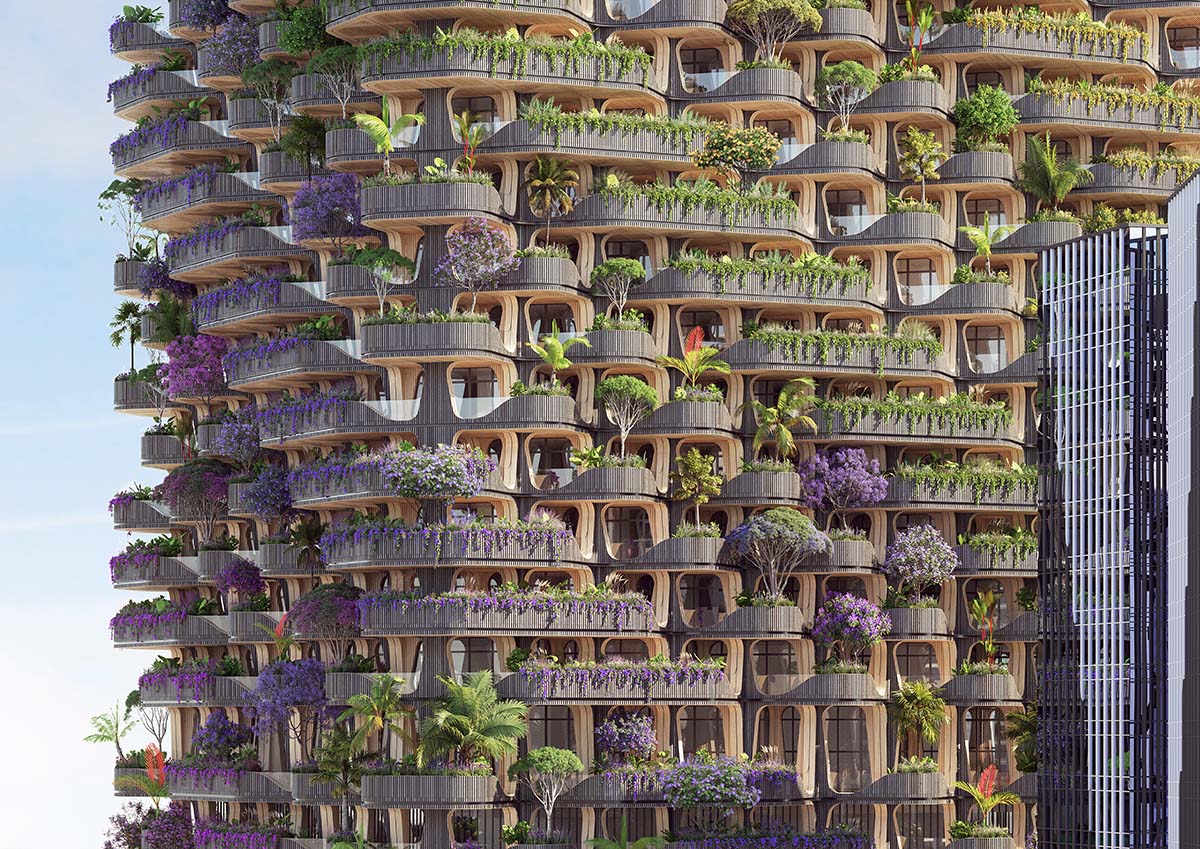
The tower will be built by using a CLT (Cross Laminated Timber). As the studio highlights, The Cross Laminated Timber manufacturing process requires much less energy than concrete or steel, and moreover it does not generate greenhouse gases. As a reminder, producing 1 ton of concrete generates 2.42 tons of CO2 and producing 1 ton of steel generates 0.938 ton of CO2.
In terms of fire resistance, remember that wood burns slowly, does not release toxic fumes, and transmits heat 250 times slower than melting steel and 10 times slower than concrete which cracks under the effects of the flames.

"The Rainbow Tree has sinusoidal balconies staggered between the even and odd floors allowing palm trees and deciduous trees to grow on a double height," explained the office.
"The endemic plant species are listed according to the color of their flowering - pink, purple, green, yellow, orange, red - to draw 5 plant spirals wrapping around the solid wood facades."

This urban forest makes it possible to fight against the effects of urban heat and constitutes a true island of freshness by the evapotranspiration of plants bioclimatizing naturally the public space.
In addition, the 30,000 plants, shrubs, and trees planted on the tower will capture 150 tons of CO2 in the atmosphere of the Cebu City annually to transform them into oxygen through natural photosynthesis. The tower, which is already low in intrinsic carbon thanks to its bio-based construction materials, will also be breathable and depolluting during its operation.
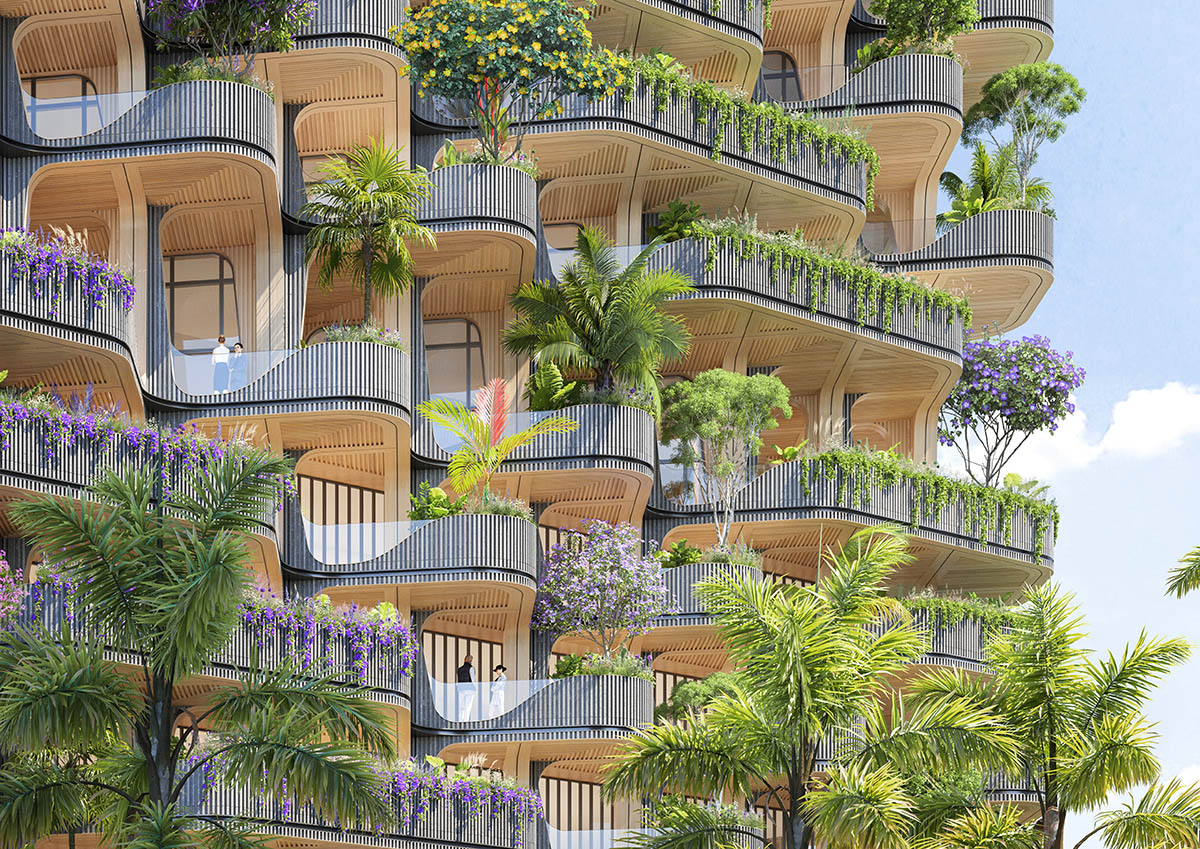
Programmatically, the Rainbow Tree is subdivided as follows: in the basement, from level -1 to -3, there are 40 parking spaces per level, or 120 spaces in the infrastructure.

On the first floor: a catering restaurant, a coworking flexible space , the large entrance hall of the accommodation, and the bicycle parking. On the second floor, there are co-working office space and access ramps to the silo car park. From the third to the sixth floor, there will be 40 parking spaces per level, or 160 spaces in superstructure for electric cars.
On the seventh floor, there are the condominium pool and spa. On the eighth floor, there is the mezzanine of the fitness center offering a double height over the swimming pool.
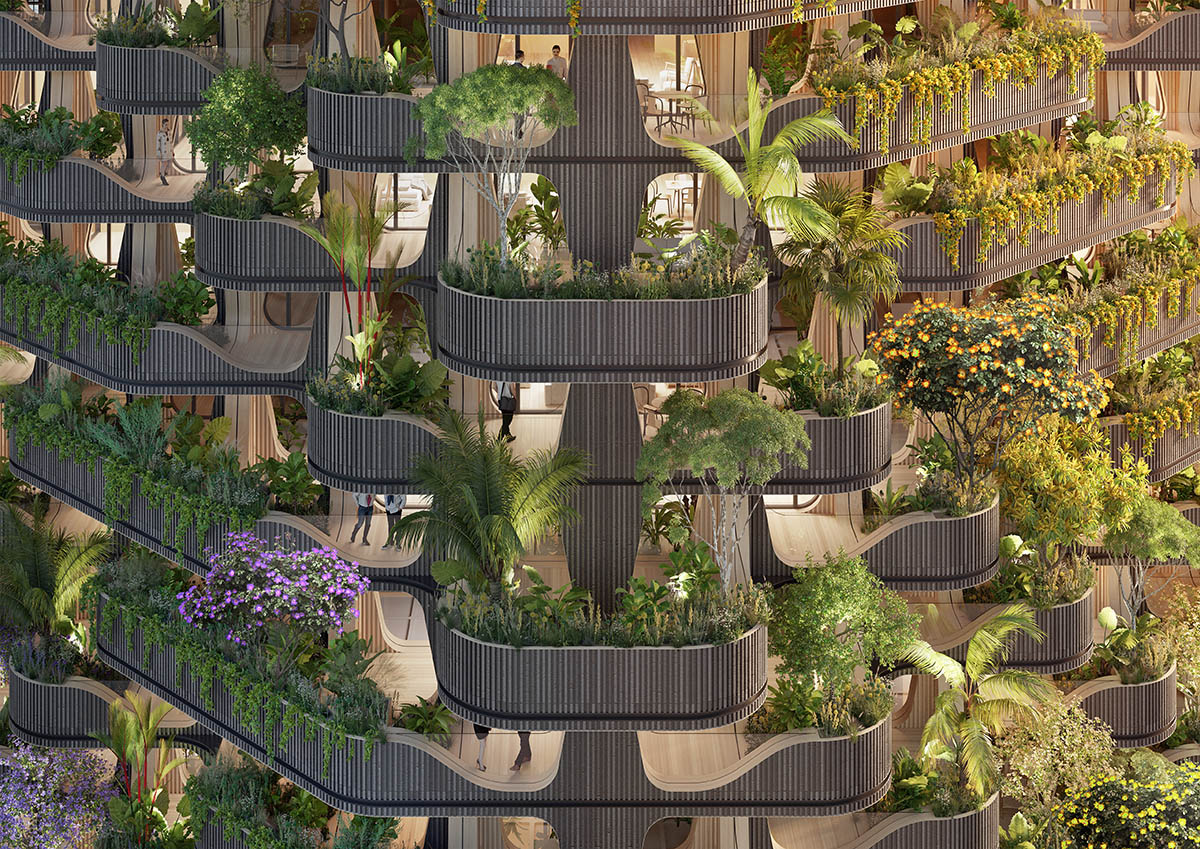
From the 9th to the 31st floor, there will be 13 apartments per level with the 3-bedroom apartments in the corners, or 300 apartments (138 Units - 1 Bedroom / 115 Units - 2 Bedrooms / 47 Units - 3 Bedrooms). On the 31st floor, an urban sky farm and its 2 mezzanines aquaponically producing fruits, vegetables, and algae harvested in an extra-short circuit by the inhabitants of the Rainbow Tree.
On the roof, 1,650-square-metre photovoltaic and thermal solar panels will be used.
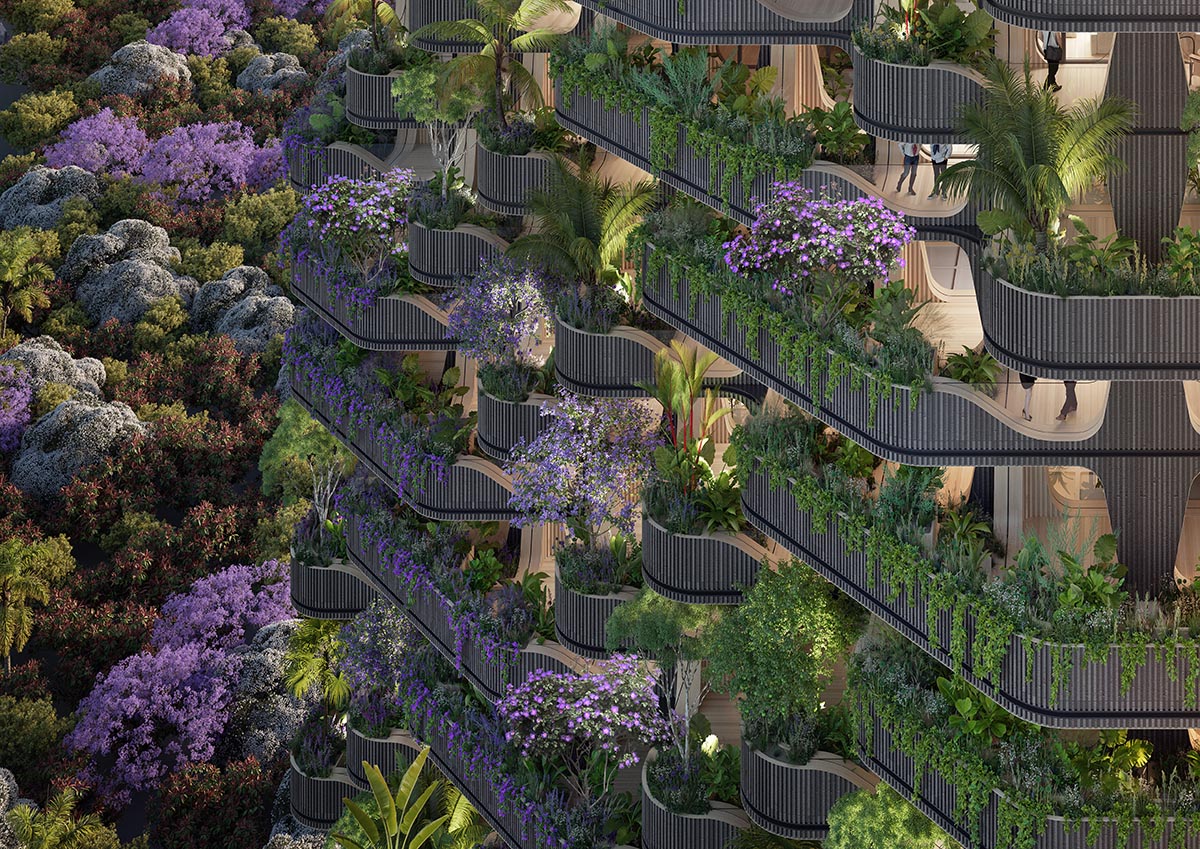
"By 2050, 80% of the world's population will live in cities. It is now necessary to produce as close as possible to the consumer-actors and consume the minimum of resources while reducing wastes and greenhouse gas emissions," said Vincent Callebaut, founder of Vincent Callebaut Architectures.
"Within the framework of the new circular economy, the Rainbow Tree is a prototype of a completely biobased vertical forest respecting the four pillars of the ecological city of the future, namely: energy self-sufficiency (heating, cooling, and electricity); greening of buildings and development of urban agriculture; soft mobility centered on pedestrians, bikes and electric co-mobility; social innovation through spaces for sharing between residents and solidarity services," added Callebaut.
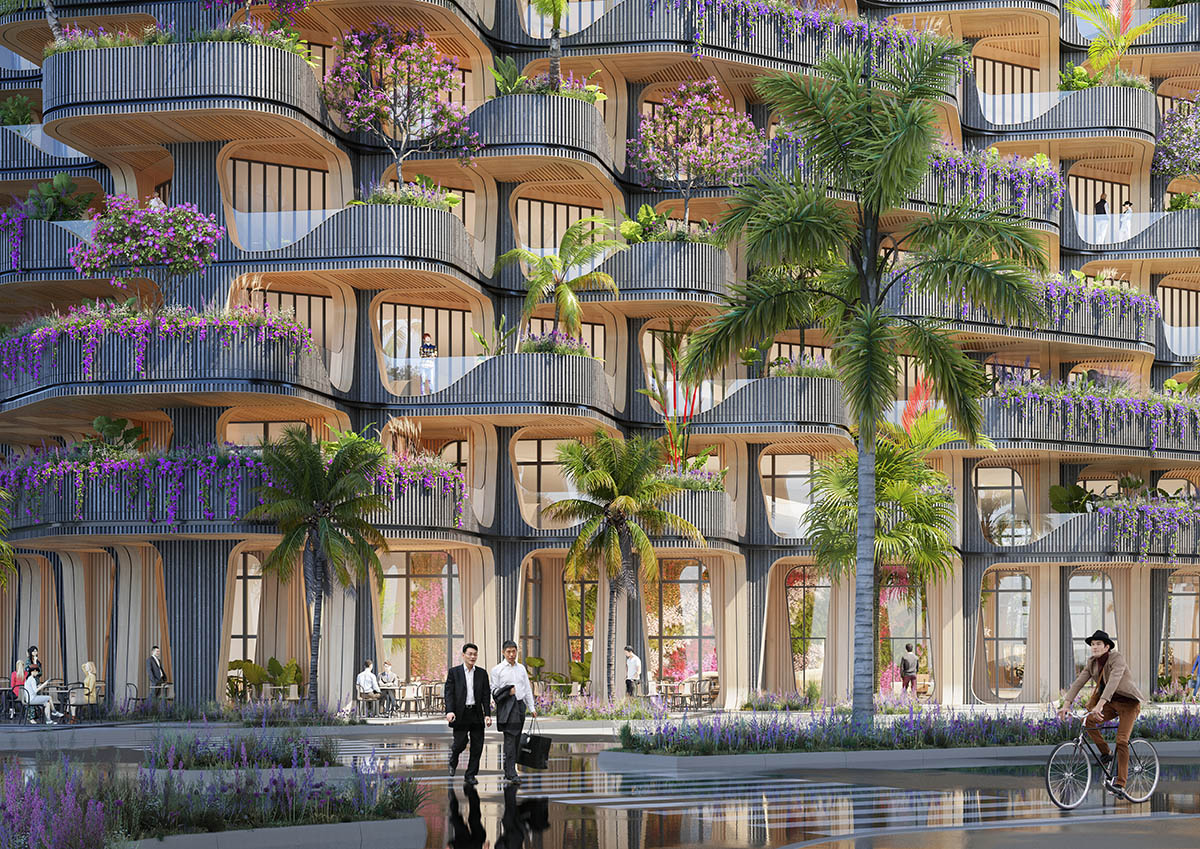
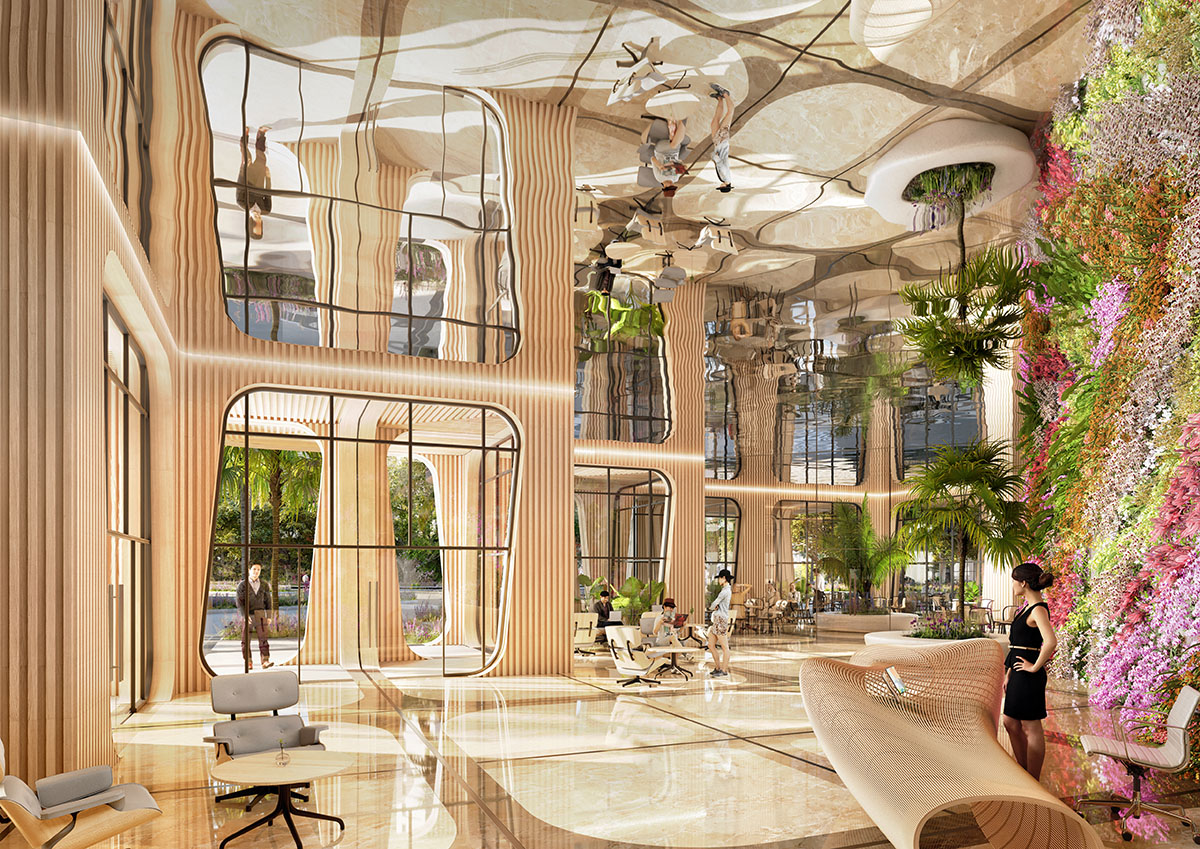

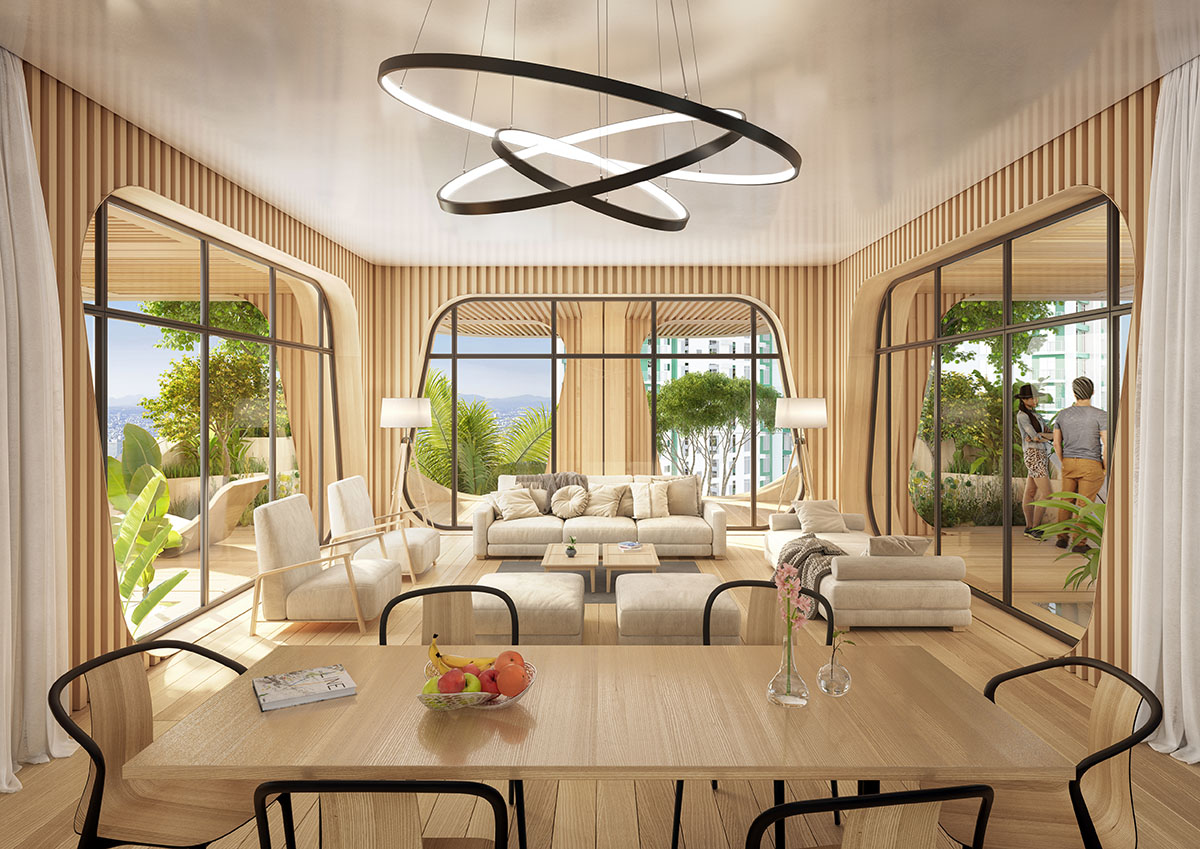
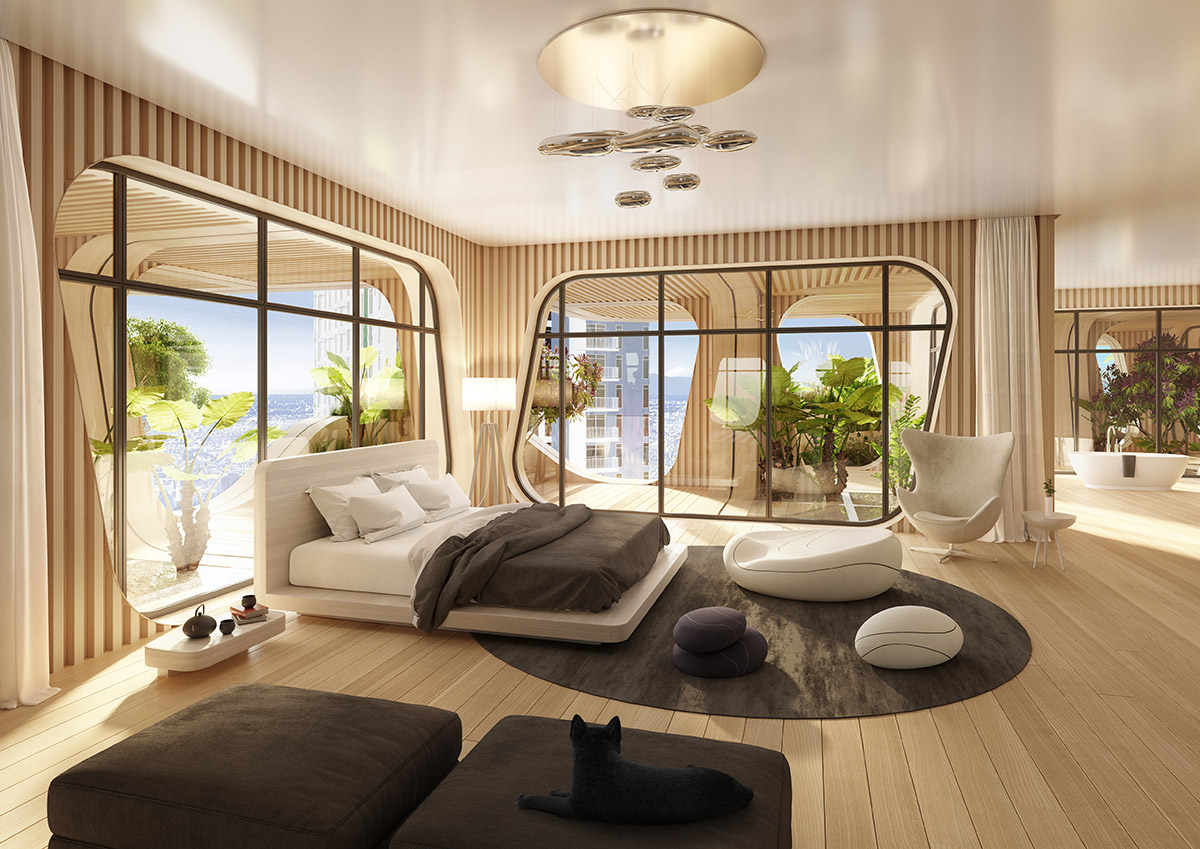
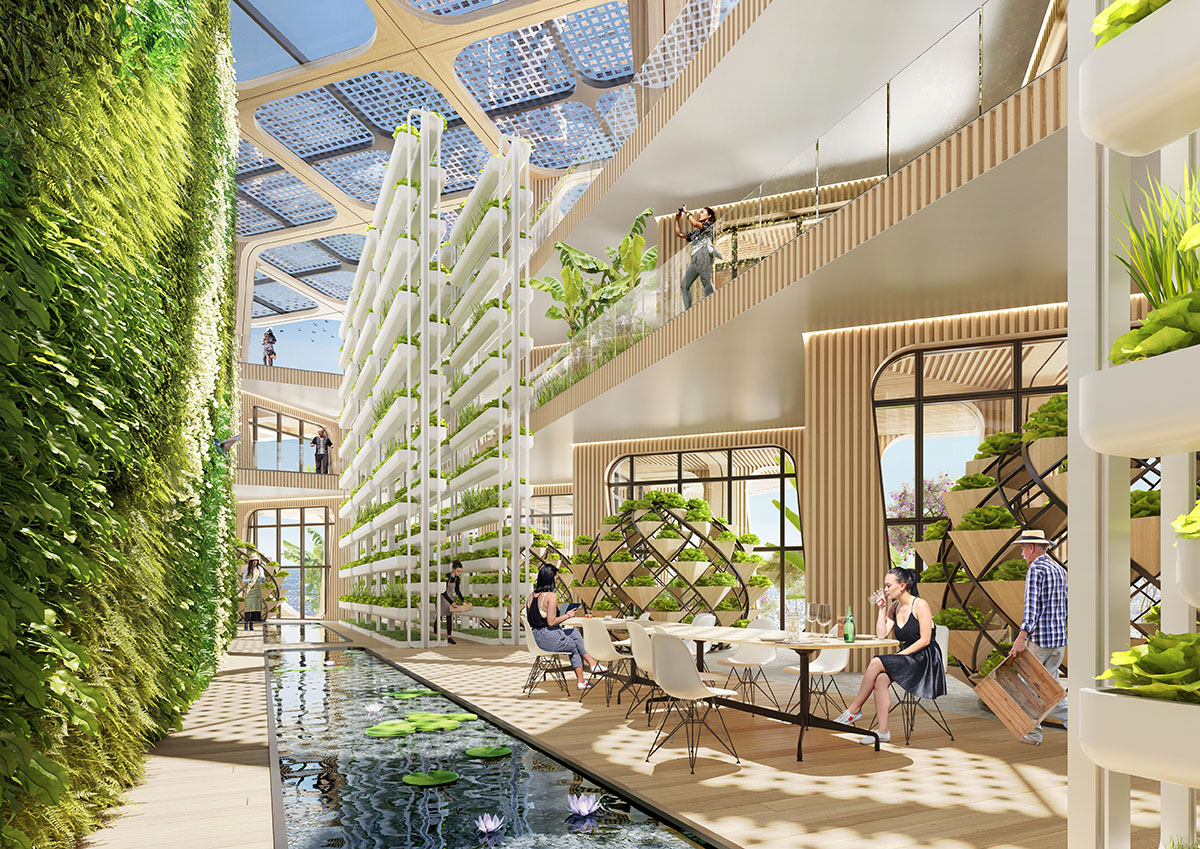
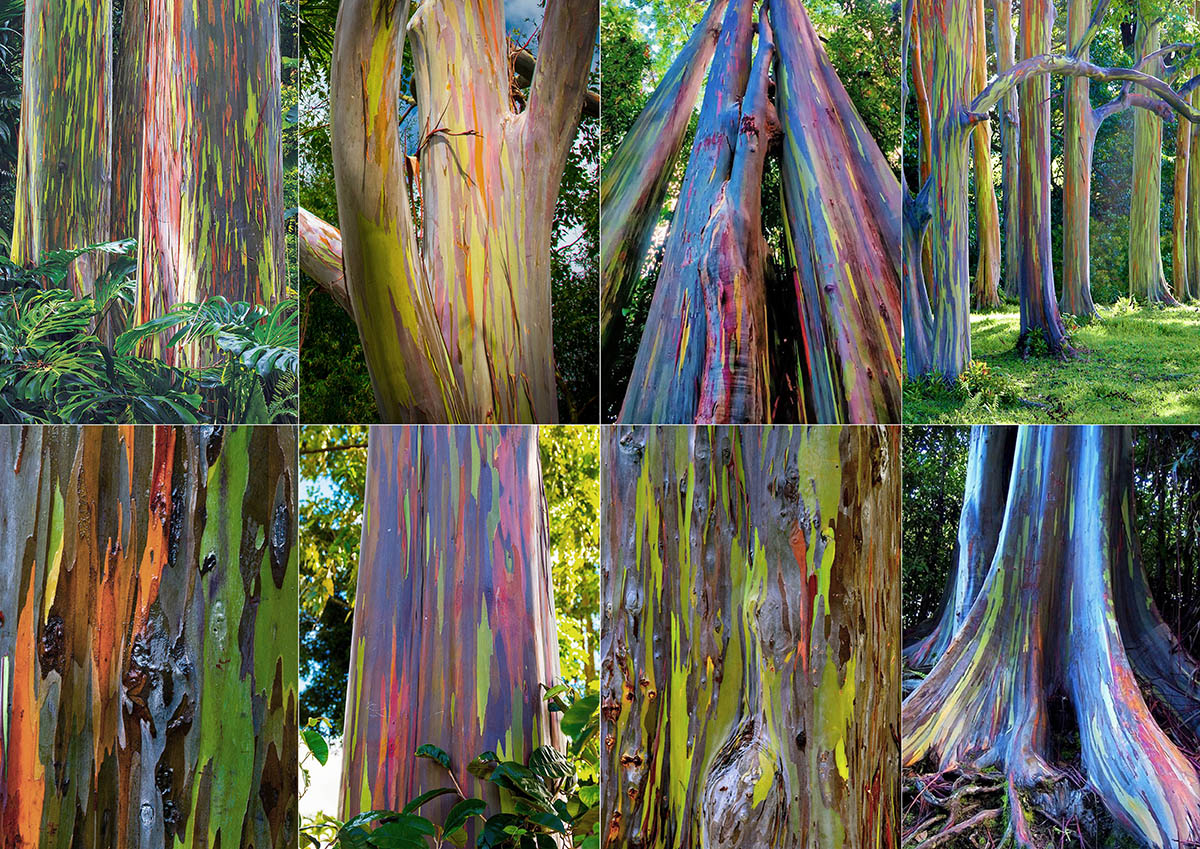
Vincent Callebaut Architectures was founded by Belgian ecological architect Vincent Callebaut. Vincent Callebaut Architectures is known for its green projects and ecological approach tackling many aspects of sustainability on renewable energies, biodiversity and urban agriculture.
All images courtesy of Vincent Callebaut Architectures.
